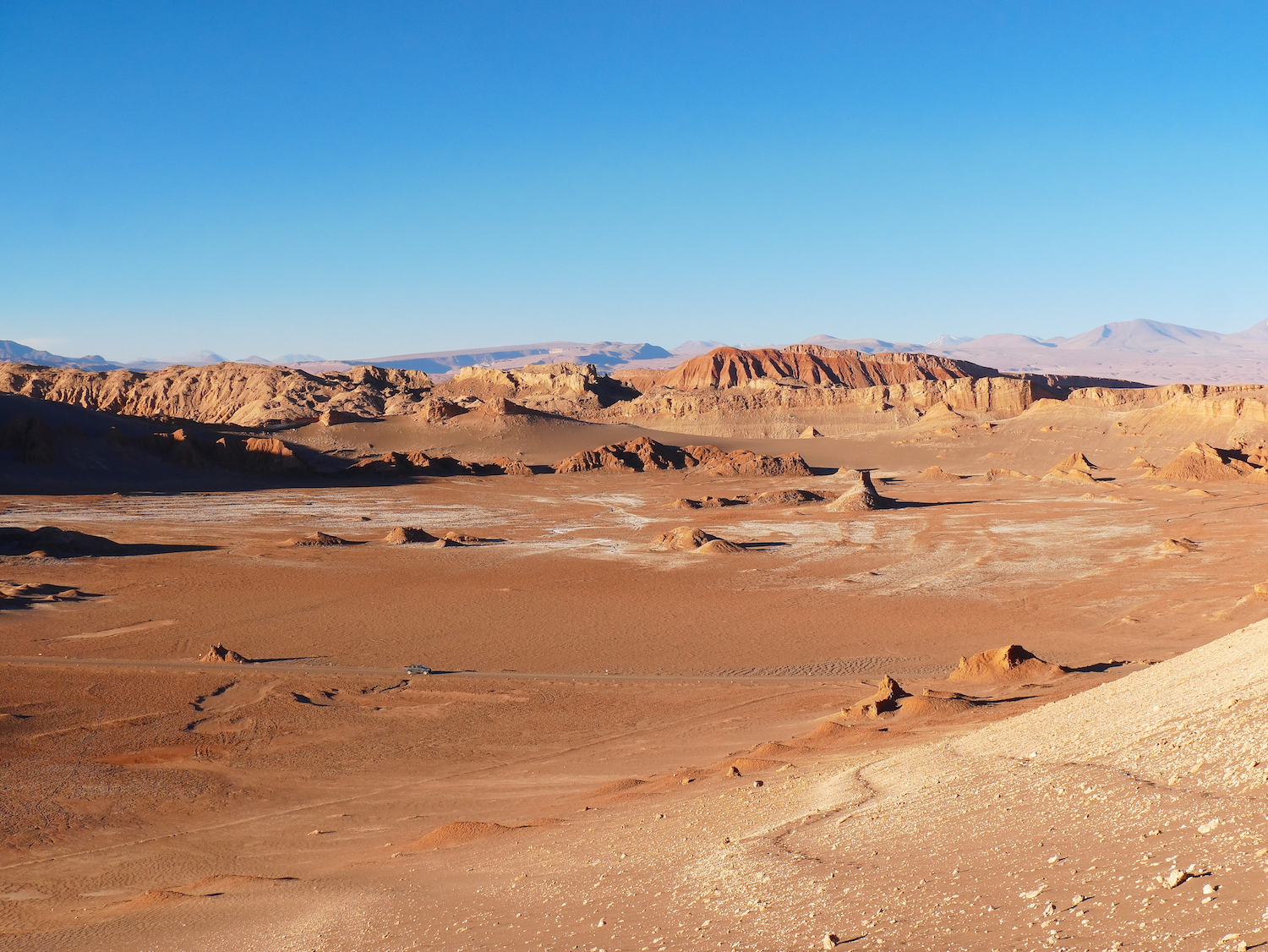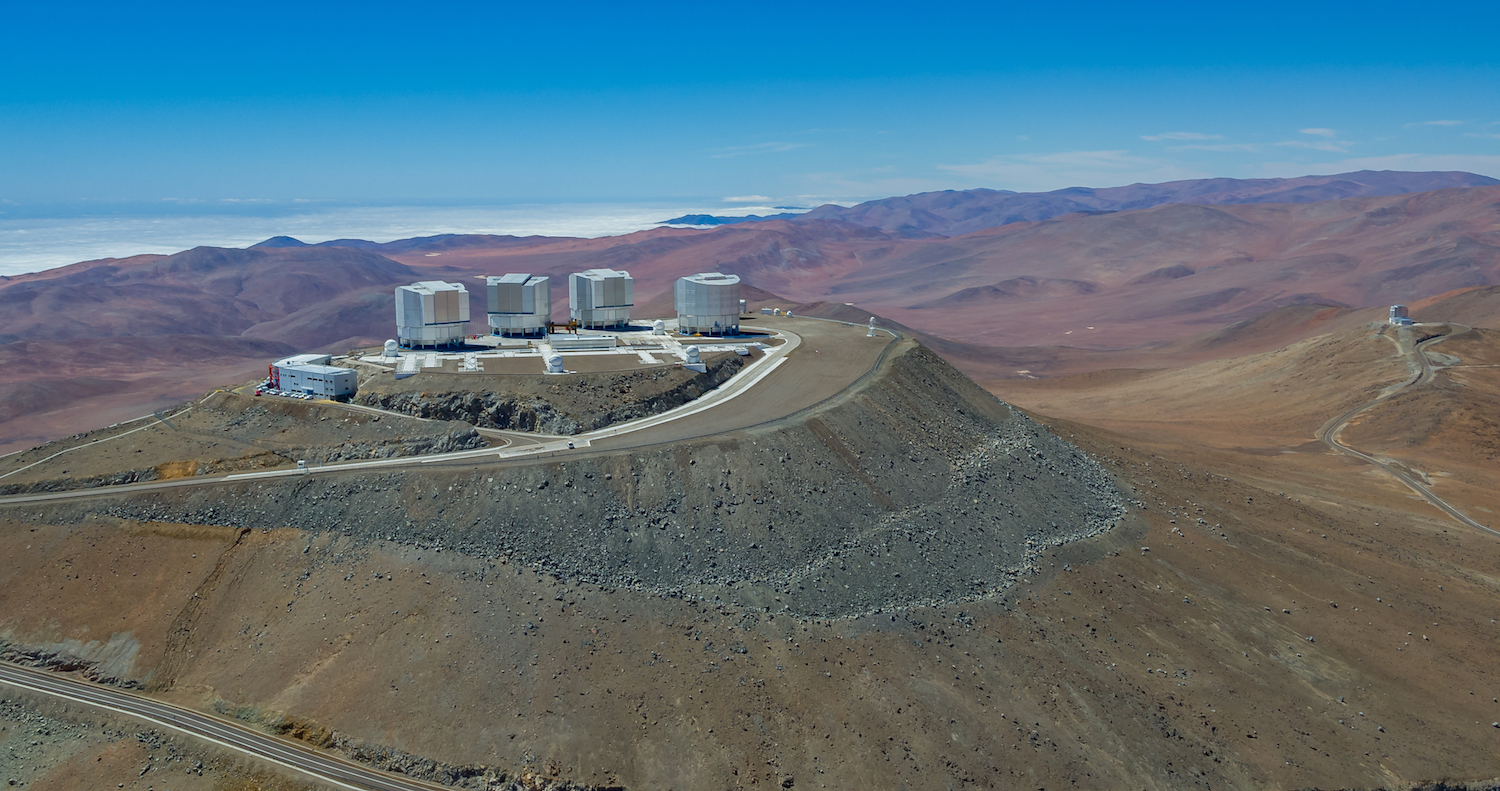What's So Special About the Atacama Desert?

Chile's Atacama Desert, the driest nonpolar desert on Earth, stretches across a roughly 600-mile (1,000 kilometers) tract of land wedged between the coastal Cordillera de la Costa mountain range and the Andes Mountains. The region boasts stunning geologic formations and has provided scientists with a wealth of research opportunities.
Old, hot and dry
The Atacama is the oldest desert on Earth and has experienced semiarid conditions for roughly the past 150 million years, according to a paper in the November 2018 issue of Nature. Scientists estimate that the desert's inner core has been hyperarid for roughly 15 million years, thanks to a combination of unique geologic and atmospheric conditions in the area. This perfectly parched inner-desert region spans roughly 50,000 square miles (130,000 square km), according to soil scientist Ronald Amundson of the University of California, Berkeley.
The Atacama is tucked in the shadow of the snow-capped Andes Mountains, which block rainfall from the east. To the west, the upwelling of cold water from deep in the Pacific Ocean promotes atmospheric conditions that hamper the evaporation of seawater and prevent the formation of clouds and rain. [Photos: The Haunting Splendor of Chile's Atacama Desert]
In other deserts around the world, like the Sahara, the mercury can soar above 130 degrees Fahrenheit (50 degrees Celsius). But temperatures in the Atacama are comparatively mild throughout the year. The average temperature in the desert is about 63 degrees F (18 degrees C).
An analogue for other worlds
The outskirts of the Atacama are home to communities of organisms that have adapted to thrive in harsh conditions. The desert's hyperarid core, however, is largely devoid of plant and animal life, save for a few strains of microbial life. Scientists hope that studying the dry, dusty conditions of the Atacama will reveal secrets about the key to life in other parts of the universe, such as Mars.
"It's not the biology that makes scientists eager to study in the Atacama Desert — it's the lack of biology," said Henry Sun, an astrobiologist at the Desert Research Institute in Las Vegas, Nevada. Researchers suspect that the microbes that inhabit the desert's hyperarid core — which slip into a sort of stasis during periods of aridity — could survive life on the Red Planet.
"It's a really interesting place to see how tenacious life is on Earth and what the climatic limits to life as we know it really are," said Amundson.
But even the most tenacious of life-forms can be disrupted.
On average, the driest part of the Atacama receives less than a millimeter of rain each year. In rare cases, torrents of rain do fall, and life responds. In 2017, wildflowers bloomed the aftermath of a dramatic downpour. Similar rainstorms were reported in March and August of 2015.
Although the rains awakened fields of wildflowers, the floods had devastating consequences for microbial life in the desert, which has adapted to survive without water. Many microbes in the desert's hyperarid core, for instance, burst after absorbing too much rainwater.
Scientists suspect that these catastrophic storms may become more frequent as the climate changes and atmospheric conditions in the Pacific Ocean fluctuate. "Instead of making the desert drier, climate change could actually make it wetter," said Amundson.
Geologic wonderland
Much of the Atacama Desert's core is caked in thick salt deposits called playas, which can stretch for miles and are nearly half a meter thick (1.6 feet) in some places. The desert is speckled with stones that have been carried across the playas by powerful wind gusts. Alluvial fans, which are large, fan-shaped sediment deposits, connect the desert plateau with the mountains that surround it and suggest that water once flowed from the Andes into the desert.
The Atacama also features a 435-mile-long (700 km) and 12-mile-wide (20 km) swath of desert known as the nitrate belt. Nitrate minerals can be found in everything from explosives to fertilizer and were mined extensively in the Atacama before the 1930s.
Traditionally scraped from the desert's crusty surface or mined from rocky veins, nitrates were initially thought to be carried to the desert by wind-swept sea spray. Recently, scientists discovered that one of the sources for the desert's "white gold" might be ancient, evaporated groundwater.
Other materials, such as lithium, copper and iodine, have also been mined nearby; in some cases, the remnants of these mining operations can be seen from space.

A dazzling array of telescopes
At 16,570 feet (5,050 meters) in elevation, the Atacama Desert plateau may be the best place in the world to spot the solar system's secrets. To the delight of amateur astronomers, the desert sees as many as 330 cloud-free nights each year. High along the Atacama Desert plateau, an array of observatories track the celestial bodies in our solar system and beyond.
The Atacama Large Millimeter Array/submillimeter (ALMA) — a network of 66 telescopes run by an international collaboration of scientific organizations from Europe, North America, East Asia and the Republic of Chile — spies on faraway stars and the planets birthed around them.
The European Space Observatory's Very Large Telescope, helped spot the TRAPPIST-1 system of Earth-like planets, located a mere 40 light-years from Earth, and has gathered data on distant exoplanet atmospheres. This telescope, along with others, has uncovered some of the universe's most intriguing oddities and provided a wealth of data to researchers and astronomers worldwide.
Additional resources:
- Southern Night Sky Revealed: Chile's Atacama Desert (Photos)
- 8 Cool Facts About the ALMA Telescope
- Explore the Atacama, from the Medical University of South Carolina.
Sign up for the Live Science daily newsletter now
Get the world’s most fascinating discoveries delivered straight to your inbox.











